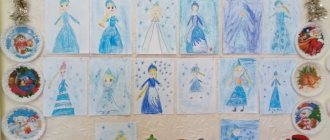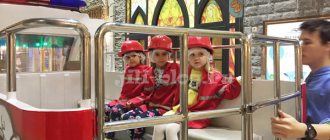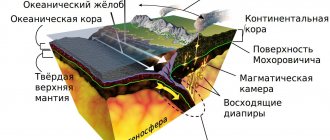I'm a man in the world
Morning:Conversations:
“What do I know about my family” Goal:
To encourage children to use knowledge about their family more widely and creatively in practice.
UG
complex No. 2, sub-plan.
Finger game
“Who has arrived?”
Target:
development of fine motor skills of the hands.
Working in a corner of nature: learning to keep plants clean.
Target.
Clarify and supplement the knowledge previously acquired by children about how to keep plants clean.
Didactic game “Pick by shape.”
Target.
To develop in children the ability to compare objects in shape with geometric figures, and to correctly name the shape of objects. Develop attention and coherent speech.
Household work: long-term duty.
Target.
Teach children to carry out work-related assignments during the week and keep order in the physical education corner. Teach children to take responsibility for assigned tasks.
Formation of cultural and hygienic skills: exercise “Palms-palms”.
Target
. Teach children to independently monitor the cleanliness of their hands, wash their hands correctly, and teach them to check the quality of washing and drying their hands.
Walk 1
Observation
“Leaf fall, leaf fall. Autumn caulk forest" Purpose:
To consolidate children's understanding of the “golden period” of autumn - leaf fall. Developing children's ability to compare leaves of different trees.
Didactic games: “Say it in one word.”
Goal:
select generalizing words for the proposed examples.
“Blow the leaf off the table .
Goal:
development of speech breathing.
“Make a pattern from fallen leaves”
Target:
development of fine motor skills.
Outdoor game:
complex No. 2
Didactic game “Listen and Do.”
Target.
Develop the ability to move in accordance with the indicated direction. Develop attention and coordination of movements.
Labor activity:
preparing land for planting seedlings, washing toys.
Goal:
to cultivate hard work and the ability to work collectively.
Independent play activity with external material.
Evening
Gymnastics after sleep
case No. 2, sub-plan.
walking along massage paths .
Gymnastics for the eyes
case No. 2, sub-plan.
Conversation about health.
Target.
To form in children a conscious attitude towards health and a desire to protect it. Explain that a good mood is an important factor for maintaining health.
Learning finger games
“Who lives in the family” Purpose: Through thin. word to put together an idea of a family.
DI. “What does anyone need?”
spruce: Develop children's knowledge about professions, the belonging of objects to professions (using an album).
Introduction to fiction:
story by K. Paustovsky “The Thief Cat”.
Target.
Teach children to find answers to questions posed by the teacher in the text.
Role-playing game “Builders”: plot “New Street”.
Target.
Teach children to perform game actions in accordance with the game plan, to unite in the game. Form friendly relationships between children.
Manual labor:
We are preparing attributes for the game “Clothing Store”.
Target.
Improve children's ability to work with paper, cardboard using a finished pattern or template. Stimulate a creative approach to work, develop fantasy and imagination.
Walk 2
Observation: properties of air.
Goals: invite children to tell what they see in front of them, to the left, to the right, to pay attention to the clarity and clarity of visible objects. The fact that we see objects around us is explained by such a property of air as transparency.
Sports game towns.
Goals: to teach children to hold the bat correctly, take a player’s stance (become the left side to the field, feet shoulder-width apart, distribute body weight evenly), knock down pins by throwing the bat from the side or from the shoulder. Develop interest in sports games.
Outdoor game:
complex No. 1
Didactic game "Arrange the objects."
Target.
To consolidate children’s ability to navigate in space relative to themselves, to determine in a word the position of an object relative to themselves, another person or object.
Independent play activity with external material.
Conversation in the senior group “I am a person”
Conversation with children of the senior group on the topic “I am a man!”
Target:
- form an idea of yourself as a person ( “I have a body”
,
“you need a body to live”
;
“I am different from animals”
;
“What parts does my body consist of?”
);
- reinforce the concept: “one – many”
;
- expand vocabulary: people, person , head, torso, arms, legs;
— develop skills of cultural behavior.
Equipment and material: mirror, circles of multi-colored paper (red and blue).
Progress of the conversation:
Before the conversation, invite the children to look in the mirror.
Guys, who do you see?
Children's answers. Presumably, the children will say their names.
Right. What word can we call all of you, me, your beloved dads and moms? Children's answers.
Of course, people. Each of us is a person. Who is he? Let's try to figure it out. Man is alive like plants and animals. He can move, breathe, feel. But a person also knows how to think. A person is an interesting combination of the physical body and our thoughts and feelings. Let's take a closer look at our body. Let's try to name the parts of the body that we meet only once. Children's answers. And now those that are repeated in the human body. Children's answers. Right. All parts of the body perform their specific and very important functions for humans. But at the very beginning of our conversation, we said that a person is not only our body, but also our feelings and emotions. What is a feeling, how do you understand this word? Children's answers. An emotion is a short-term experience. For example, joy, surprise, irritation, anger - all these are emotions. People know how to communicate using emotions. Shall we try?
GAME "Pantomime":
Shoulders say: I'm proud. My back says: I’m already old. The finger says: look up. The head says: yes, no.
You see, with the help of body parts we can even talk. But a person can also express his emotions using his voice. Let's play:
GAME "Actor"
: using our voice we convey surprise: “You love cartoons,” resentment “Why did you hit me?”, joy “It’s so beautiful here!”, fear “I broke the glass at school.”
And each person has his own character. I suggest everyone think and take for themselves the mask of the animal whose character they resemble. For example, a bunny is cowardly, a hedgehog is smart, a wolf is evil, etc.
Reflection:
Guys, who was our conversation about? Children's answers.
What body parts can you name? Children's answers.
Name a few emotions. Children's answers.
Self-esteem:
If you think that today you were attentive and active in our conversation, then take a red circle; if you think that you took little part in the conversation and were distracted, then take a blue one.






